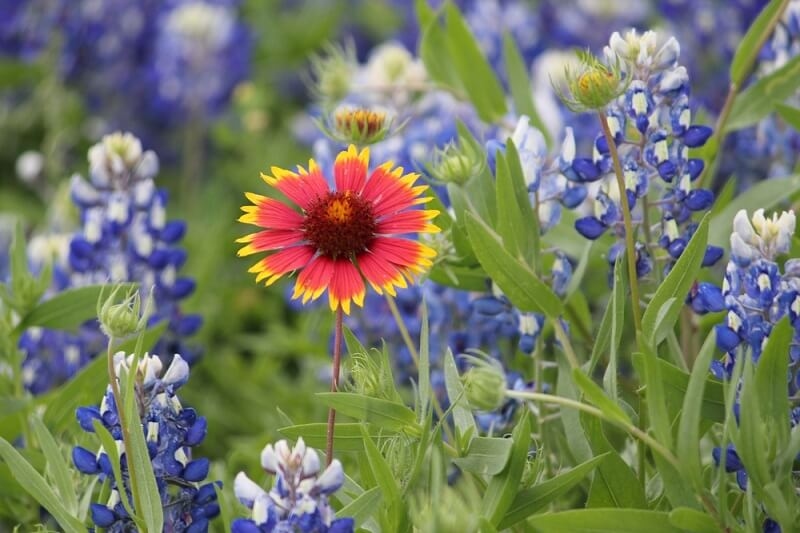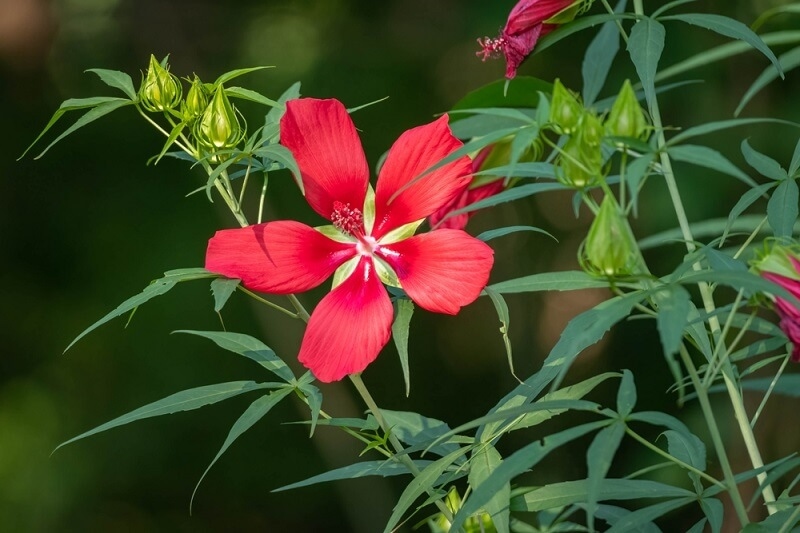
Texas' landscapes are as diverse as the state itself—from dry deserts to coastal plains, prairies to piney woods. However, there is one rule that applies across the Lone Star State for homeowners and horticulturists alike: the best and most responsible way to create a sustainable, healthy garden is to plant native Texas plants. They are adaptable to Texas's unique soils, temperatures, and precipitation patterns, making them not only aesthetically pleasing but also the environmentally responsible choice.
Selecting native plants that benefit pollinators in Dallas provides not only beautiful color through the seasons, but also supports local ecosystems, conserves water, and increases low-impact gardening. When you rely on Texas perennials that tolerate drought and native Texas shrubs that are appealing to wildlife, your garden can be just as vibrant during the long, hot summers as it is during the pleasant seasons.
This guide covers the top picks, maintenance practices, and natural methods for attracting bees naturally with simple native wildflowers that thrive throughout Texas.
Planting the native Texas plants is not just a design choice; it is an ecological duty. Because native plants are adapted to the unpredictable climate of Texas, they need less water, fertilizer, and pesticides. Thus, they help to provide more biodiversity while stabilizing the soil and conserving local plant species.
Native Texas plants have extensive root systems that help to improve soil structure and decrease erosion. They also provide nectar, pollen, and habitat for birds, pollinators, and beneficial insects.
If you are designing a backyard sanctuary in Austin or a community garden in Dallas, native Texas plants are the base for a resilient and self-sustaining habitat.

Use native pollinator plants that are indigenous to Dallas, which will produce blooms in spring, summer, and fall when establishing a garden in North Texas.
Pollinators, such as bees, butterflies, and hummingbirds, are responsible for reproduction in plants, and native plants are their preferred source of food.
Combining these species will provide a habitat for pollinators while requiring less water and maintenance and still offering seasonal diversity and color.
Because Texas has frequent drought conditions, it is important to plant drought-resistant Texas perennials to establish a site for long-term landscape health. These perennials are tough survivors, tolerating extreme heat with little rain.
These resilient perennial plants serve as a basis for a water-wise garden. When combined with low-maintenance native wildflowers, they provide seasonal interest while still supporting a water-wise garden concept.
Bees are one of the most important native pollinators in Texas, and like all native pollinators, they are dwindling in numbers due to habitat loss and pesticide usage. Rest assured, it is relatively easy, if not an organic action, to undo the decline by learning to attract bees through careful plant selection naturally.
Some excellent bee-attracting native Texas flowers include Bluebonnets, Gaillardia (also known as Blanket Flower), and Bee Balm (Monarda fistulosa). These not only enhance your landscape but also offer valuable nectar to local pollinator communities.
In addition to pollinators, many homeowners would like to see songbirds, butterflies, and small mammals. The strategy is to use wildlife-friendly Texas shrubs that offer both food and shelter.
Planting any combination of these shrubs will give you year-round interest and make your yard a refuge for native wildlife. Together with native pollinator plants for Dallas, these combinations create an outline for balanced ecosystems that will truly live on their own.
Planting easy native wildflowers is the simplest way to bring in seasonal color and pollinator activity in your landscape. These are all low-maintenance plants that will naturally reseed themselves with very limited care. There's nothing better than creating a little natural beauty.
Planting the wildflowers among drought-tolerant perennials from Texas will provide a healthy rotation of blooms throughout the seasons, keeping your garden beautiful and self-renewing.
It is very possible to build a landscape that flourishes with native Texas plants, but thoughtful design is necessary. Here are ideas to make it worthwhile, functional, attractive, and environmentally sound:
Thoughtfully planned, your landscape will have reduced maintenance and provide a haven for pollinators and wildlife.
Native Texas plants can be quite hardy once established; however, continual maintenance will help to ensure the sustainability and aesthetic longevity of the plants.
By observing these steps, your garden stays healthy and environmentally friendly, in tune with Texas' natural beat.
Adding Texas native plants to your landscape is more than a gardening trend; it is a commitment to sustainability. The Dallas area offers native plants for pollinators, wildlife-friendly Texas shrubs, and other species that conserve water, promote biodiversity, and can survive even the most challenging conditions. By learning how to attract bees naturally, incorporating drought-resistant Texas perennials, and adding a variety of native wildflowers, you can create a vibrant and beautiful outdoor space while cultivating a thriving living ecosystem.
Native gardening embodies the reality of Texas: survival, Resourcefulness, and Natural Beauty. Moreover, whether you are a homeowner, a landscape contractor, or a conservation enthusiast, engaging with native plants preserves our ecological integrity and provides a lush garden that will survive for generations.
This content was created by AI